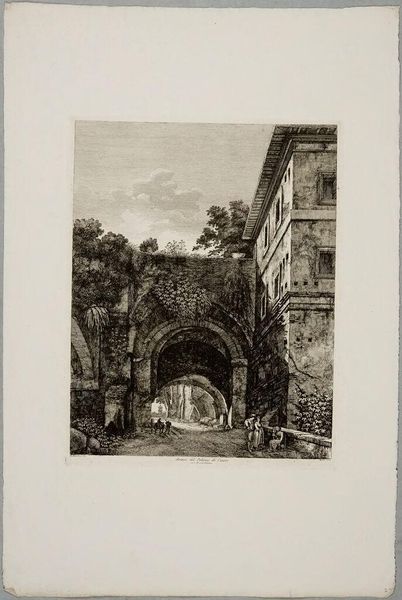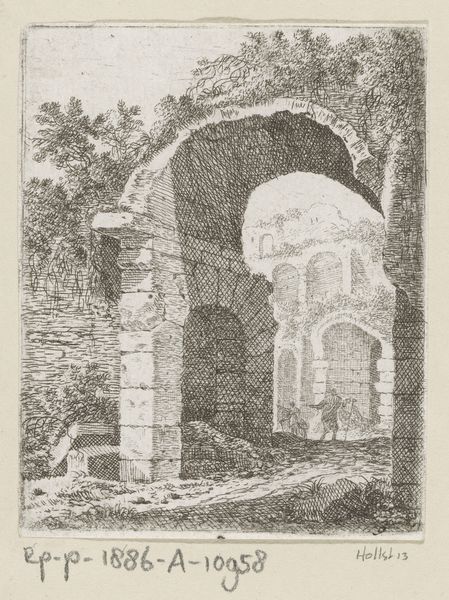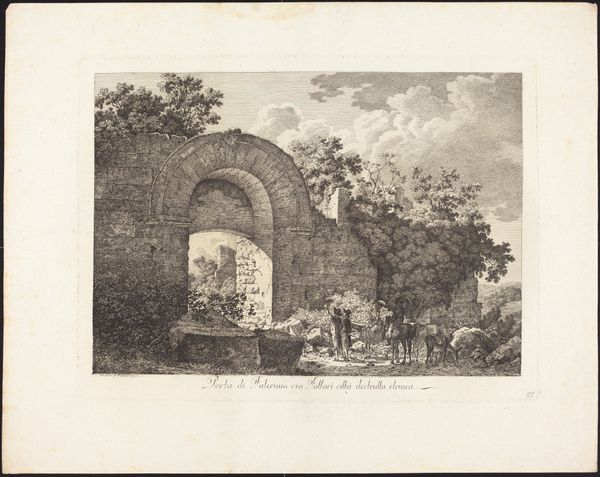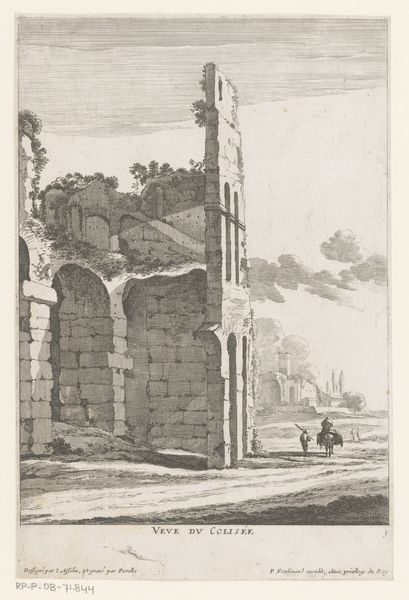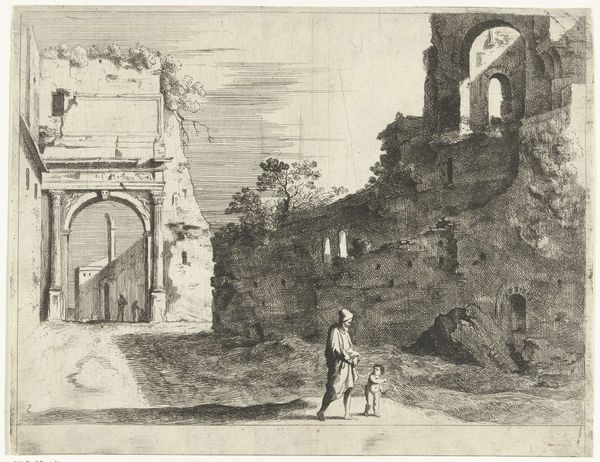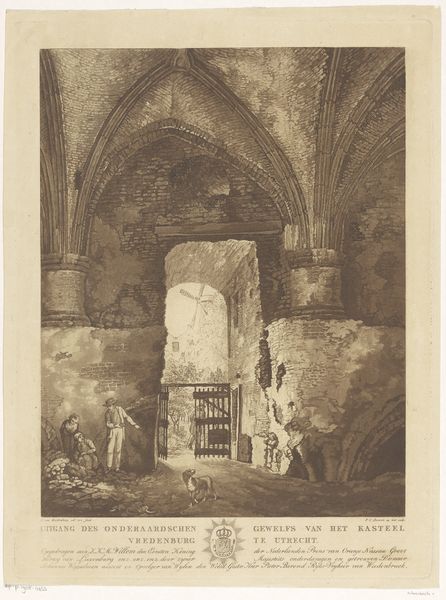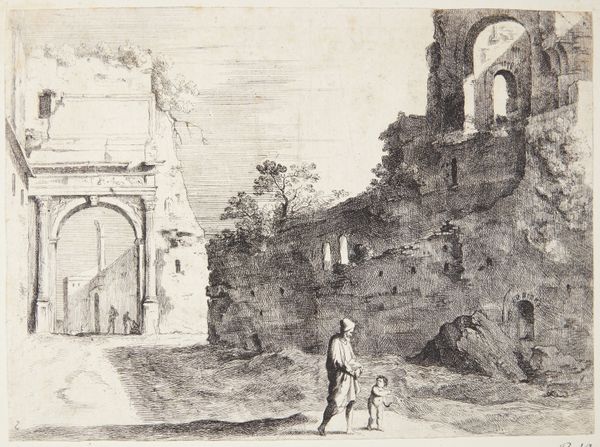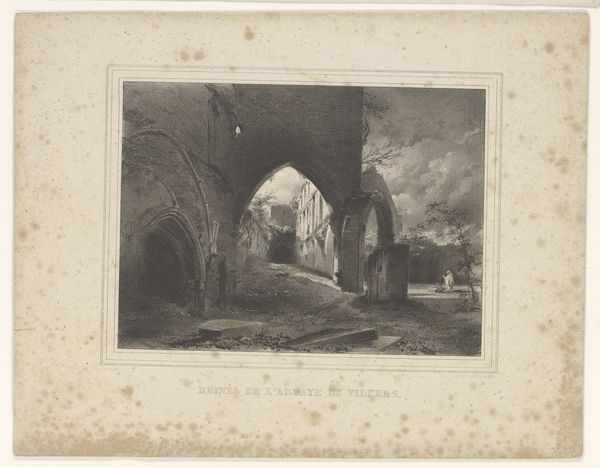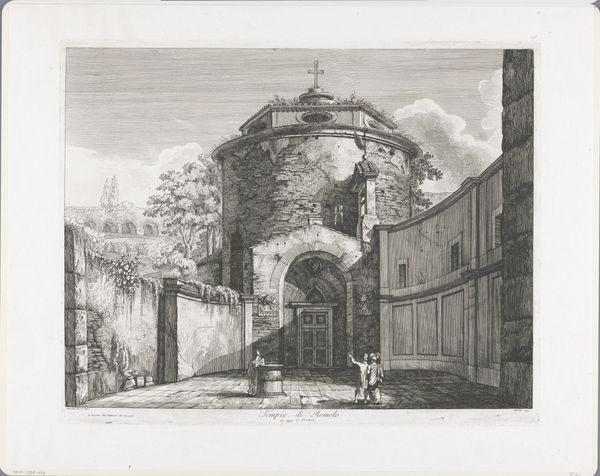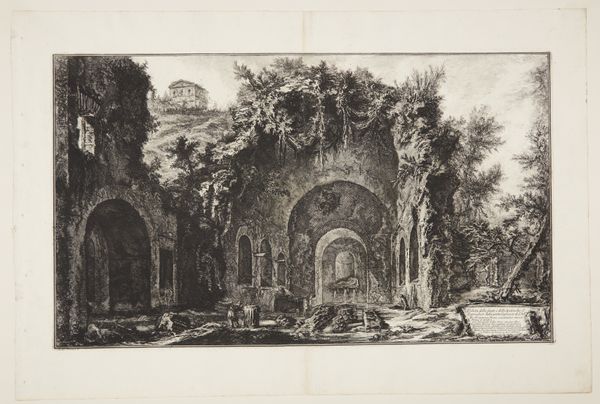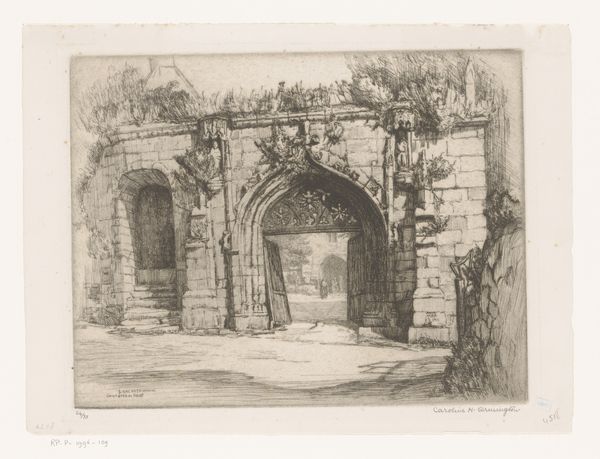
drawing, print, engraving, architecture
#
print photography
#
drawing
# print
#
romanticism
#
cityscape
#
engraving
#
architecture
#
realism
Dimensions: height 459 mm, width 355 mm
Copyright: Rijks Museum: Open Domain
Curator: Luigi Rossini's "Palazzo dei Cesari te Rome," created around 1820, offers a detailed view of the ancient Roman palace. Editor: My first impression is one of layered time—the grandeur of antiquity overlaid with the textures of a living, evolving city. It's quite evocative. Curator: Rossini, working within a historical and romantic sensibility, isn't just presenting architecture. He's commenting on power, decay, and the ever-present past as it relates to contemporary social structures and ideologies. We need to consider what it means to depict these ruins at a time of significant political upheaval in Europe. Editor: Absolutely. I see it also as a document of urban history, noting the socio-political factors that have impacted architecture and its iconography, reflecting both imperial aspirations and their subsequent fate through decay and the integration of modern structures. The print subtly depicts daily life alongside the imposing structure. How do we interpret that juxtaposition? Curator: That interplay is crucial. It hints at class dynamics, resource distribution, and even gendered labor. Who populates these spaces? What do their interactions with the physical architecture signify about the sociopolitical narratives being enacted there? Also, think of how architecture intersects with feminist perspectives, revealing patriarchal power through the built environment. Editor: And how is Rossini, as the artist, implicated? Does the act of depicting these crumbling monuments normalize or challenge the structures they represent? This engraving invites examination of the relationship between art, power, and spectatorship itself. How is the gaze mediated, and what politics does that mediation reinforce? Curator: Precisely. This artwork becomes a nexus for multiple interrogations about how history is constructed and disseminated. It reveals complexities about the political use of imagery within an era where archaeological rediscovery fed growing nationalist ideologies. Editor: It makes you consider who had access to this vision of Rome, who controlled its narrative, and what political agendas were subtly interwoven into its lines and shadows. Curator: Examining "Palazzo dei Cesari te Rome," truly makes us reconsider history not just as a series of events, but as an ongoing negotiation of power and meaning represented in visual forms. Editor: A poignant reminder that the past is always present and mediated, shaped and reshaped by contemporary hands, artistic, and political contexts.
Comments
No comments
Be the first to comment and join the conversation on the ultimate creative platform.
